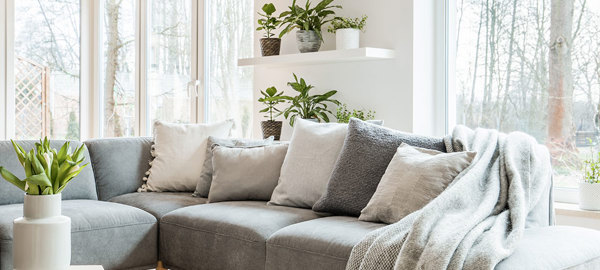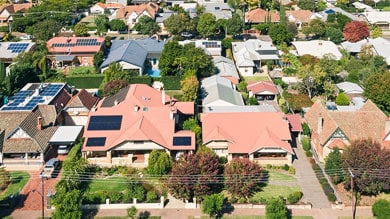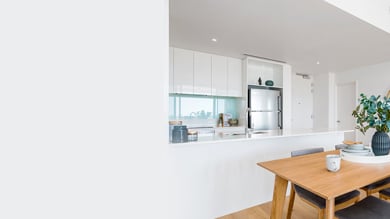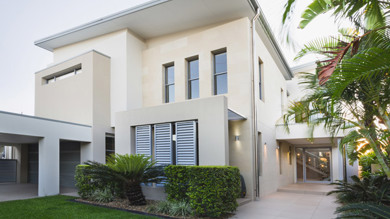
Simple tips for an eco-friendly home
A greener home can do wonders for the environment and your bank balance. Find out how these 6 simple ideas can make all the difference.
Simple tips for an eco-friendly home
A greener home can do wonders for the environment and your bank balance. Find out how these simple ideas can make all the difference.
#1 Grow your own
We all know that locally grown, organic food is best for our health and the environment – the problem is, it’s often unaffordable. The simple solution: grow your own! If you’re not much of a green thumb start with a simple herb garden in a couple of window boxes, then progress to a veggie patch in the garden. You’ll save heaps of money on fresh fruit and veggies and reduce your carbon footprint at the same time.
Another great way to go green is by adding plants and trees to your home. They naturally remove toxins from the air around you and add life and colour to your home.
TIP: Nourish your plants with your own homemade compost! Turn vegetable peelings, eggshells and rotten fruit into garden fertilizer with a worm farm, compost bin or Bokashi bin. It will also keep rotting biowaste out of landfill – another bonus for the planet.
#2 Re-purpose
When furnishing your home, there are many ways you can be kind to the environment whilst creating gorgeous interiors. Buying second-hand furniture can save you money, and give your home unique appeal. Vintage furniture from the 1950s and 1960s is often well made and durable but if the pieces you find are a little worse for wear, refresh them with a lick of paint or new upholstery – it’s a great way to unleash your creativity with the added benefit of knowing that you aren't contributing to landfill.
Repurposing your existing furniture is another great way to reduce waste around the home – take a look at the shape and structure of the item and ask yourself what else it can be used for. A small wooden ladder, for example, could be re-used as a towel rack or a tiered display for pot plants.
TIP: If you do purchase new furniture, try to invest in quality pieces made from sustainably sourced materials, rather than cheap, synthetic items that will need replacing down the track.
#3 Light the way
LED and compact fluorescent lamps (CFLs) offer incredible energy and cost savings over regular incandescent bulbs. Both options do cost more upfront, but they produce less heat, use less energy and last significantly longer than traditional light bulbs, so they're ideal green lighting options for your home. However, CFLs do have drawbacks. Some people find the light too harsh and unflattering to be worth the savings. CFLs must also be properly disposed of, which some consider a hassle.
If CFLs aren't for you, you may want to consider LED lights which use up to 79% less electricity than traditional halogen incandescent bulbs.
There are LED bulbs on the market that offer a very similar color to the light from an incandescent bulb, and LEDs don't have the disposal requirements that CFLs do.
#4 Insulate
One of the most effective ways to save money on energy bills and make your home more comfortable is to insulate.
A well-insulated home can stay cooler in summer and warmer in winter, thanks to the material acting as a seal between the inside and outside of your house.
In winter, your home will stay heated with less energy input than an uninsulated home. In summer, an insulated home will take longer to heat up, requiring less energy for active cooling. Insulation is not limited to the roof – you can insulate your walls and floor for maximum energy efficiency.
TIP: Windows and glazed doors can let in (and out) large amounts of heat. So even if you’ve installed insulation, go for double glazing.
#5 Go green
Proper landscaping can add to the energy efficiency of your home. Plant deciduous trees near windows and doors – in summer, the trees will provide shade, keeping your house cooler, and in winter, when the trees lose their leaves, they will allow more sunlight in to warm your home.
Planting native trees is best, because they will thrive in your environment – you can also save money on the cost of taking care of your garden, as most native landscaping requires less water and maintenance
#6 Be water-wise
To reduce your impact on the environment and your back pocket, conserve water around the home and use less water heating. Here are some ways you can do this:
- Use cold when washing clothes.
- Fill your dishwasher/washing machine completely before using it.
- Take shorter showers and install water efficient shower heads.
- Water your garden early in the morning or late in the afternoon.
TIP: Install a rainwater tank and use it to water your garden and clean your car.


